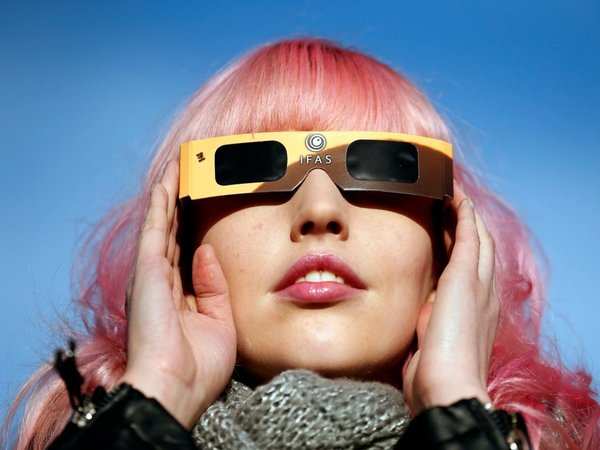Let’s get this out of the way: you cannot safely watch the solar eclipsewithout wearing protective glasses.
If you aren’t wearing protective glasses, ultraviolet light from the sun can penetrate and be absorbed into your retina, where it can cause a condition that eye doctors call solar retinopathy .
Many people are aware of that, but there are still some myths out there about what exactly happens to people who have looked at an eclipse without protection.
Contrary to what some warnings make it sound like, solar retinopathy doesn’t necessarily leave sufferers totally blind. For most people, the damage affects central vision and may make it blurry or spotty. In some cases, that damage goes away after a few days, weeks, or months. But in others, that damage is permanent.
And it’s all due to the power of the sun and the way an eclipse can cloud our judgment.
The sun is powerful enough that direct exposure to its light can damage your eyes or damage your camera sensor if you point a zoom lens directly at it.
Most of the time, we instinctively don’t let ourselves look at the sun – the brightness causes us to blink or look away, which is why solar retinopathy cases are mostly associated with eclipse events (other cases have occurred when people have engaged in sun-gazing rituals or when people tripping on LSD have been captivated by the sun’s brilliance).
During an eclipse when the sun isn’t totally covered by the moon, our star’s brightness decreases significantly. All of a sudden it’s not painful to look at the sun, either because the brightness has lessened so much or because our fascination overrides our pain reflex.
Either way, that decrease is deceptive. The sun is still emitting enough ultraviolet light that it could potentially damage your eyes within seconds.
“We were just doing it for a short time,” 70-year-old Lou Tomososki told Today of himself and a friend sneaking a peek at a 1962 eclipse in Oregon. “I have a little blind spot in the center of my right eye.”
That doesn’t mean everyone who has ever glanced at an eclipse has lost their vision. Solar retinopathy is difficult to predict. Ophthalmologists and optometrists reliably expect to see a few cases of it after an eclipse,according to Medscape .
Usually, people whose eyes are damaged notice a change within a few hours or by the next day (though it’s worth pointing out that cumulative damage by ultraviolet light over your lifetime can later result in eye problems).
According to NASA , symptoms usually include blurred vision, dark or yellow spots, pain, or loss of vision in the center of the eye. That sort of damage can make it hard or impossible to read or to focus on whatever is right in the center of your view.
For some people, vision recovers within 24 hours – those ones are lucky, though again, it doesn’t mean there isn’t damage to the eye, they could still see later problems. In general, people recover as much as they are going to within six months of the event, according to the American Academy of Ophthalmology .
If you are within the 70-mile-wide band of totality, you can safely remove your protective glasses once the sun is totally covered. You’ll know it’s time because you won’t be able to see anything with those glasses on. But as soon as beads of light start to re-appear, it’s time to protect your eyes again. Even 1% of the sun is enough to cause damage.
If you can’t find eclipse glasses, we’d recommend making a simple pinhole viewer to watch safely.

 Cathal McNaughton…
Cathal McNaughton…